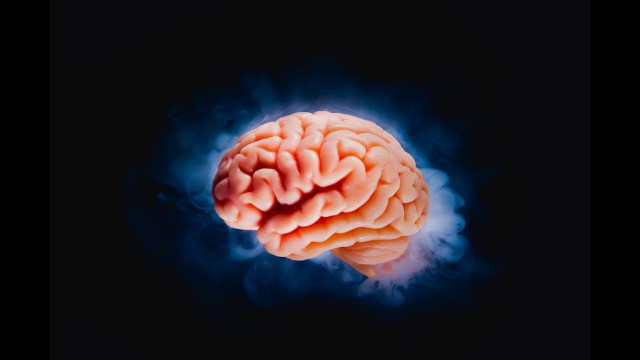Every morning, before you’re fully awake, your hand reaches for your phone. You scroll, half-aware, as sunlight drips through the curtains. Then comes the coffee, the same mug, the same number of spoonfuls. Maybe you tap your foot to the same podcast as you dress. You’re not thinking hard about any of this. You don’t have to.
That’s the point.
You’re following a script written not by conscious choice, but by your brain’s deep and ancient love for habits.
Habits are the backstage crew of human behavior. They make sure the show runs smoothly while you’re busy center stage. They save time, conserve energy, and allow us to navigate a chaotic world with surprising grace. But they also trap us in loops—comforting, predictable, and sometimes destructive.
Why does your brain cling to routines, even ones that make you feel worse? Why does it resist change, even when you want it with every ounce of your conscious will? To understand that, we have to step inside the mind’s most primal architecture—and discover why habits are not just quirks of behavior, but biological imperatives.
A Brain Designed to Be Lazy (in a Good Way)
Your brain weighs just three pounds, but it consumes about 20% of your body’s energy. It’s an efficiency machine, wired for survival over millions of years of evolution. One of its most clever tricks is to automate tasks so you don’t burn precious fuel constantly making decisions.
Neuroscientists have found that when we perform a new task—say, learning how to parallel park—a part of the brain called the prefrontal cortex lights up. This is the area responsible for conscious thinking, planning, and problem-solving. It’s slow, effortful, and tires easily.
But once the task becomes habitual, something amazing happens: the activity shifts from the prefrontal cortex to a much older brain structure known as the basal ganglia.
The basal ganglia is a hub for motor control, procedural learning, and yes—habit formation. It’s where patterns become encoded into streamlined sequences. Once a behavior lands here, it runs almost automatically, with minimal input from your conscious mind.
This system is deeply efficient. Without it, you’d have to relearn how to brush your teeth or tie your shoes every day. But this efficiency comes at a cost: once a habit is wired in, it becomes very difficult to unlearn.
The Habit Loop: Cue, Routine, Reward
Every habit follows a loop—a behavioral cycle composed of three distinct stages:
1. The Cue — This is the trigger that tells your brain it’s time to go into autopilot. It can be a time of day, a place, an emotion, or even a smell.
2. The Routine — This is the behavior itself. It might be lighting a cigarette, opening a snack, checking social media, or taking a deep breath.
3. The Reward — This is the reason your brain likes the loop. The reward can be physical (a rush of dopamine), emotional (comfort or distraction), or psychological (a sense of control or closure).
The more often this loop runs, the stronger it gets. Your brain doesn’t just remember the action—it remembers the reward. Over time, the cue alone can spark craving, drawing you into the loop even before you’re aware of it.
This cycle is astonishingly powerful. It explains why you might feel compelled to eat when you’re not hungry, check your phone when you’re not bored, or lash out even when you know it will hurt. Your brain has learned that the habit provides relief. That expectation is what fuels the loop.
Why Bad Habits Feel So Good (At First)
If you’ve ever asked yourself, “Why do I keep doing this, even though I know it’s bad for me?”—you’re not alone. And you’re not weak. You’re human.
Bad habits stick because they hijack the reward system in your brain. Every time you engage in a habit that brings immediate gratification—whether it’s sugar, scrolling, gossip, or gambling—your brain releases dopamine, a powerful neurotransmitter associated with pleasure, learning, and motivation.
But dopamine isn’t just about pleasure. It’s about anticipation. Your brain gets hooked on the expectation of reward, not just the reward itself. That’s why just seeing the cookie or opening the app can trigger the desire.
And here’s the kicker: the stronger the emotional charge behind the cue, the harder the habit clings.
This is why habits linked to stress, shame, loneliness, or anger are so sticky. They offer momentary escape. A numbing. A hit of control in a world that feels chaotic.
But that relief is fleeting. And once the high fades, the guilt kicks in. That’s the insidious part: bad habits create internal conflict—a war between the part of you that craves relief and the part that seeks long-term well-being.
Your Brain Is Not Judging You—It’s Trying to Protect You
It’s easy to beat yourself up for falling into bad patterns. But from your brain’s point of view, habits—good or bad—are survival strategies. They reduce cognitive load. They provide predictability. They act as shields against emotional discomfort.
Even self-destructive habits can make sense neurologically. For someone with unresolved trauma, for example, behaviors like emotional eating or substance use may offer temporary safety, helping them regulate feelings they never learned to process.
The problem is not that your brain is broken. It’s that your brain is doing what it was built to do: protect, predict, and repeat.
And this is why awareness—not shame—is the first step toward change.
When Habits Hijack Your Identity
Habits don’t just shape your behavior. They shape your sense of who you are.
Over time, repeated patterns become self-fulfilling. If you hit snooze every morning, you may start to see yourself as “lazy.” If you procrastinate on goals, you might label yourself as “undisciplined.” These identities harden like armor—and they’re difficult to remove.
But here’s the twist: the reverse is also true. Tiny behavioral changes can shift how you see yourself.
If you go for a walk every morning for a week, your brain begins to update the internal script: “I’m the kind of person who takes care of myself.” This identity shift reinforces the habit, and the loop begins to spin in a healthier direction.
This is why building new habits often starts with believing something new about yourself—even before you fully believe it.
Change Is Hard, But Not Impossible
You can’t erase a habit. But you can rewrite the script.
Neuroscience shows that when you stop reinforcing a habit loop, the neural pathways that support it weaken over time—a process called synaptic pruning. At the same time, new behaviors can form new connections through neuroplasticity.
But here’s the key: change doesn’t come from willpower alone. Willpower is like a muscle—it fatigues. What really works is restructuring your environment, shifting your cues, and making the desired behavior easier than the old one.
Want to stop eating late at night? Remove the cue (don’t stock the snacks). Replace the routine (go for tea instead of chips). Preserve the reward (comfort and warmth).
Changing habits isn’t about fighting your brain. It’s about collaborating with it. Working with your biology instead of against it.
The Role of Emotion in Habit Formation
Emotion is the glue that binds habits together.
This is why we often develop habits around emotional states. Boredom might lead to binge-watching. Stress might lead to biting nails. Loneliness might lead to doomscrolling.
To untangle these patterns, we have to get curious—not judgmental—about the feelings behind them. Ask: What am I feeling right before the habit kicks in? What need am I trying to meet?
This process, known in psychology as emotional awareness, helps you reclaim agency. When you can name the emotion, you create a moment of pause. In that pause lies choice. And in that choice, power.
Why Your Brain Clings to Routine in Uncertain Times
In times of uncertainty—global crises, personal upheaval, emotional chaos—your brain clings harder than ever to familiar routines.
Why? Because predictability feels like safety. When the external world feels out of control, your brain doubles down on internal patterns to restore a sense of order.
This is why old habits often resurface during stress, even if you thought you’d left them behind. They’re like emotional muscle memory. They don’t need permission—they just need a cue.
But it’s also why these moments present an opportunity. By anchoring yourself in small, stabilizing habits (like hydration, movement, journaling, or breathwork), you can help soothe your nervous system and rewire your stress response over time.
Habits and the Deep Architecture of Culture
Your habits are not just personal. They’re also social. Culture shapes what you eat, how you speak, when you sleep, and what you believe is “normal.”
Social norms reinforce habits, often invisibly. If everyone checks their phone during a lull in conversation, you’re more likely to do it too. If your community values fitness, you’re more likely to prioritize it.
This means that changing habits often requires examining the systems you’re embedded in—your family, your workplace, your peer group. Environment trumps willpower. Always.
Want to change a habit? Surround yourself with people who embody the change. Your brain will begin to mirror them, thanks to its built-in social wiring.
The Neuroscience of Tiny Wins
James Clear, author of Atomic Habits, popularized the idea that small, consistent actions compound over time. Neuroscience backs him up.
When you make even a small behavioral change and it results in a positive feeling, your brain releases dopamine—not just as a reward, but as a signal to remember and repeat the behavior.
This is why habit change sticks best when it feels good, not punishing. Make the first step so easy it feels silly. One push-up. One page. One mindful breath. That first step creates a positive feedback loop that strengthens the new habit network in your brain.
Over time, what starts small becomes automatic.
And what’s automatic becomes identity.
The Long Game: Becoming Who You Really Are
Ultimately, habits are the building blocks of character. They’re the brushstrokes of your daily life, forming the bigger picture of who you become.
When no one’s watching, when willpower fades, when you’re tired and stretched thin—habits take over. This is not weakness. This is the design.
Your brain loves habits because it wants to protect you, predict the world, and preserve your energy. But it’s also capable of profound change.
You are not doomed by your loops. You are the architect of them.
In the end, the most important habit is not what you do—but what you believe about what you’re capable of doing next.
And it turns out, the brain loves hope just as much as it loves habits.






